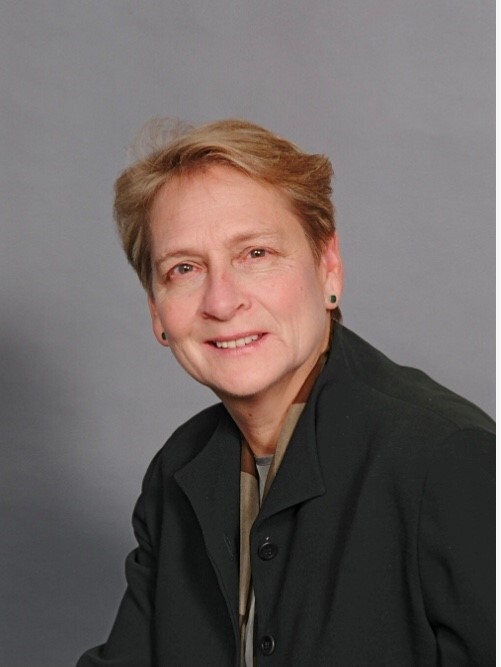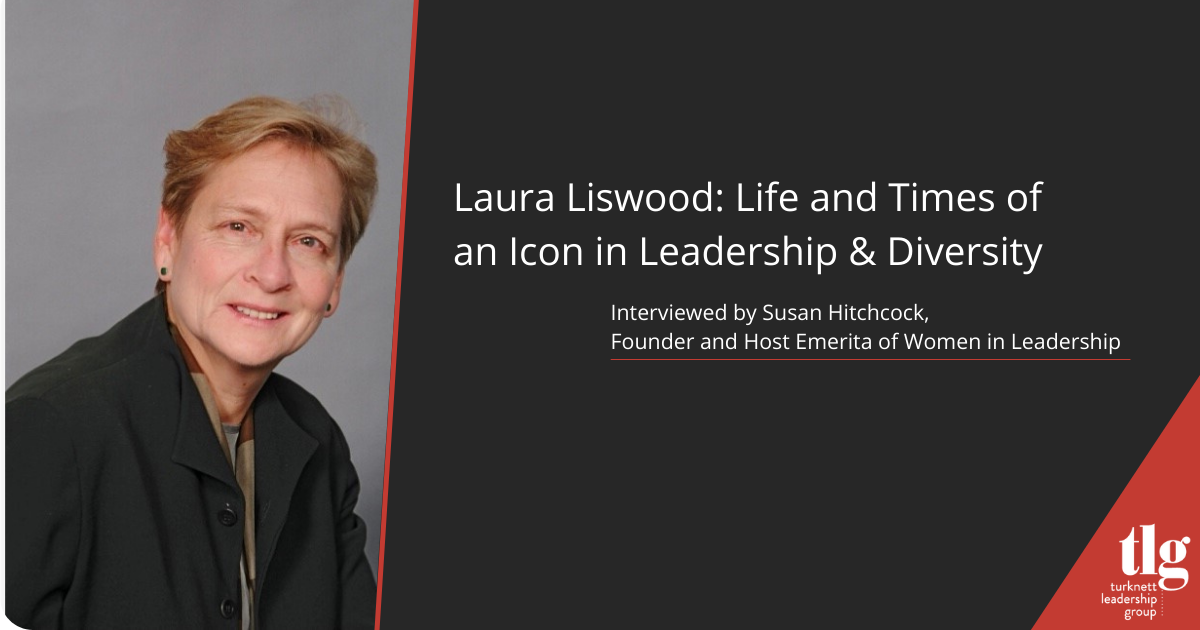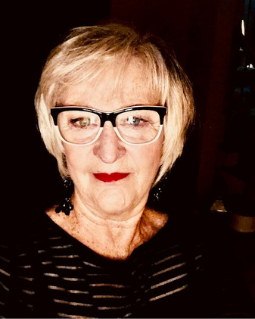


By Susan Hitchcock
Founder & Host Emerita of Women in Leadership
Having interviewed and hosted over 200 leaders and other experts over the past 20 years, I was nonetheless exhilarated to have the opportunity to talk with Laura Liswood during Women’s History Month 2021 and just before International Women’s Day on March 8. We connected via Zoom while Laura was at her home in Washington, D.C. and I in Georgia with my uncontainable enthusiasm. I wanted her to know that to me, she’s THE definition of an “icon” and a SHEro because of her amazing career journey and her extraordinary contributions, especially her passion for gender equity and women’s leadership.
For those who may not be familiar with Laura or haven’t followed her career as closely as I have, she’s the epitome of a multifaceted woman and leader. She’s an international consultant, speaker and the author of three books including “
The Loudest Duck: Moving Beyond Diversity While Embracing Differences to Achieve Success at Work.” Among her degrees are a B.A., a Harvard M.B.A., and a J.D. from the University of California, Davis, School of Law. After practicing law in her early career, Laura made her mark in the corporate world at Goldman Sachs in New York. During her tenure there, she held two positions: Senior Advisor and Managing Director, Global Leadership and Diversity.
Laura’s expertise and credibility continued to grow, and so too did her dedication to changing the status quo for women in politics and across the board. That became crystal clear when she co-founded The White House Project and later, as the Director of the Women’s Leadership Project. In the latter role, she began to focus on global leadership contributions by women heads of state, i.e., presidents and prime ministers from around the world. Next came a series of interviews, a book and a video documentary featuring some of these outstanding and pioneering women. Ultimately, this particular focus would lead Laura to a crowning achievement, i.e., Co-Founder of the Council of Women World Leaders, a non- governmental organization that includes 82 current and former women world leaders.
In their own words, “the Council’s mission is to mobilize the highest-level women leaders globally for collective action on issues of critical importance to women. Through its networks, summits and partnerships, the Council promotes good governance and gender equality, and enhances the experience of democracy globally by increasing the number, effectiveness, and visibility of women who lead their countries.”
Today, Laura continues to serve as Secretary General of the Council and along with the current Council Chair, works to sustain the mission and the organization’s impact. A key dimension of the Council’s mission has been to build the capacity of emerging leaders. One compelling action they’ve taken is the summer Graduate Fellowship Program, including a special program in Public Health. While these programs were virtual in 2020, they remain successful and always focus on some gender-based issues. Overall, 80+ women and one man have served as fellows in 24 offices worldwide. Imagine the possibilities for these young leaders!!
Key Insights From Laura:
Women’s Progress:
Women still articulate a sense that the playing field isn’t level, that there’s greater scrutiny, and that the standards are different for them. It’s been this way for 20+ years since I started the project of interviewing women world leaders. The current leaders see it the same as the early ones so that part hasn’t changed as much as I would have liked. All of the women world leaders have had a passion for what they were / are doing or, they would’ve given up. Generally speaking, women and other minority groups want to change things. Why? Because historically they’re out of power, why wouldn’t you? However, if you’re in the other group and ‘in power,’ why would you want to change the status quo?
So, we’re not there yet. The older I get the more I wonder. We’ve been at this game for quite a while, shouldn’t there have been more change by now? Women have increased on boards (2019 – 26% of corporate board seats in the U.S.) but many medium and small cap companies have zero. There’s a huge disparity among private equity and VC firms regarding access to funding, power and wealth.
The older I get the more I like affirmative mechanisms. Over 110 countries have affirmative mechanisms for their parliaments and over 60 for their corporate boards. People (in this country) keep wondering why we keep dropping lower and lower on the world economic gender report. The USA is #70! I know people have all sorts of feelings about affirmative mechanisms but show me something that’s going to be more of a circuit breaker. I tell people that the SEC type organizations, institutional investors etc. are going to be putting pressure on you so you might as well just act as if you have affirmative mechanisms in place.
I also wrote an article in the Harvard Business Review about when you get women on boards at a level of critical mass. (But) there are still those who say women aren’t as qualified. That’s just not true. To get results, it’s not only measurement but accountability and transparency – these are not new fangled ideas. A lot of focus is on ‘intake’ of women and minorities, not on ‘upgrade.’
Leadership Styles:
We still have archetypes about what leaders look and sound like. Quite honestly, until and unless we get a critical mass of women in these top positions, their (more relational style of leadership) is not going to be embraced and will still come under scrutiny. The core traits of a good leader are gender blind – trust, perspective, helping others succeed, moral compass, a willingness to challenge, etc. But they end up being ‘gendered’ so that if a woman expresses a strong point of view, it may have social consequences versus a man with the same traits is seen as forceful. The traits of leadership don’t change, but how they’re perceived changes by who exhibits them. This is the case for all non-dominant groups.
There’s some good news in terms of more valuation being given to relational leadership style versus the transactional leadership style. My basic premise is that the best leaders have both styles. Women are historically given reinforcement to have the relational leadership style which incidentally are never considered quite as effective as the transactional leadership style. But if women don’t have the transactional style, they won’t be (seen as) effective. And men, the dominant group, if they only exhibit the transactional style, over time they won’t be very effective. Why? Because we’ve seen the need for more empathy, curiosity, listening skills, inclusivity, etc. These traits have risen in importance.
Opportunities to Move Forward:
There’s so much more research now, McKinsey, Mercer, The World Economic Forum, etc. We know from McKinsey’s report for instance, that it’s the first rung of the career ladder when women fall off. You need to have someone looking at the research that’s out there and applying that knowledge to your own organization and your own data. One of the latest trends is data analytics. You’ve got to have people in data analytics! My basic belief is that we may or may not be able to de-bias individual people’s perceptions of things. We can raise awareness but there are limitations to things like unconscious bias training. There can certainly be bias within an organization and that’s where a lot of focus needs to go.
In my diversity training, people say they understand but say ‘tell me what to do.’ You then give them very practical inclusivity tips, practical advice on how they should change their feedback systems, etc. Feedback comes in very disparate ways. Look at what creates the gatekeepers. (When asked about any differences in leadership or effectiveness regarding the more contemporary women world leaders like Jacinda Ardern, the much talked about PM of New Zealand) “Jacinda is the 3rd female PM in New Zealand so people there have a sense of normalcy – and – she’s in a country that ranks high on the gender equality list. She acts very authentically which may or may not be true of women leaders in the past, many of whom have been ‘legacies.’
There’s still scrutiny of women leaders but less than what’s happened historically because there’s more flexibility with more women on the world stage. There’s a tendency to put a woman in a top position when there’s a crisis. They say ‘We’ve tried everything else, so let’s try a woman. If she fails, we can say – Well then.’ (On the subject of the first female Vice President and first woman of color in the U.S.) Regarding extra scrutiny, that’s interesting. It’s good that President Biden has put so many woman in his cabinet, and Kamala Harris is a strong figure. But it’s important that if that (extra scrutiny) does happen, the press should call it out. It can’t be tolerated and there needs to be a voice behind her supporting her. Any double standard needs to be exposed.
Other life and personal notes from Laura:
My life journey has been taken step by step. Reminds me of Mary Catherine Bateman’s notion of ‘composing a life.’ Women do that, see life as a patchwork, or a tapestry. I chose to go to law school because I was interested in politics; then I went to business school because as a lawyer I only understood half of the Wall Street Journal. Later on my corporate path, I learned that understanding the private sector is really important.
I also believe in physical physicality and physical courage. I learned a lot from bicycling across Siberia and parts of China and Pakistan.
I was working in New York on 9/11. I wanted to do something and I enrolled in the Police Academy in D.C. After 10 months of training, I became a reserve police officer, a part of the bike policing initiative. A lot of the work I do is abstract but not policing. I really like having a perspective of both!
As the interview ended, I knew that I had only scratched the surface of the “life and times of Laura Liswood.” I look forward to future opportunities to learn from Laura, maybe even a more intimate in person ‘fireside chat’ post Covid. But for now, I’m eager to share what I’ve learned so far and express my gratitude to Laura for all she’s done to promote gender equality, women’s leadership, and true diversity.




